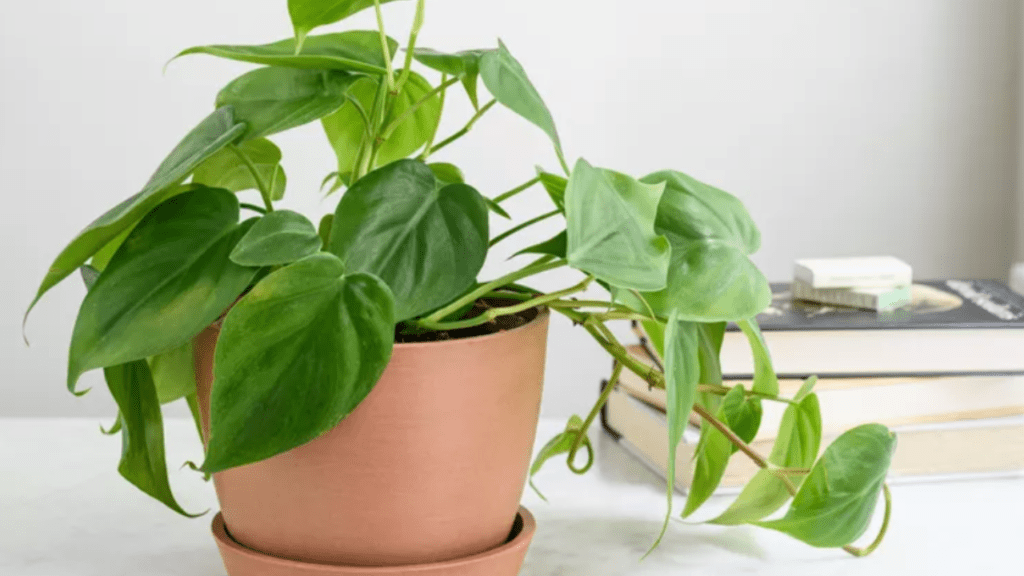
The Ultimate Philodendron Care Tips for Beginners
Philodendron care is essential for keeping these popular houseplants vibrant and healthy. Whether you’re a seasoned plant enthusiast or a beginner, understanding the specific needs of your Philodendron will ensure it thrives in your home. This comprehensive guide covers everything you need to know about Philodendron care, including light, watering, soil, temperature, humidity, and common problems, helping you become a confident and successful Philodendron caregiver.
Table of Contents
ToggleUnderstanding Philodendrons
What Are Philodendrons?
Philodendrons are a popular type of houseplant known for their lush, green leaves and easy care requirements. They are part of the Araceae family and are native to the tropical regions of America. Philodendrons are often grown for their ornamental foliage and can be found in a variety of shapes and sizes, making them a versatile and attractive addition to any indoor space.
These plants are known for their ability to adapt to a wide range of indoor conditions, making them an ideal choice for beginner plant enthusiasts. With the right care, Philodendrons can thrive and add a touch of greenery to your home.
When it comes to Philodendron care, it’s important to provide the right amount of light, water, and nutrients to ensure the plant remains healthy and vibrant. Understanding the specific needs of your Philodendron will help you create the ideal environment for it to flourish.
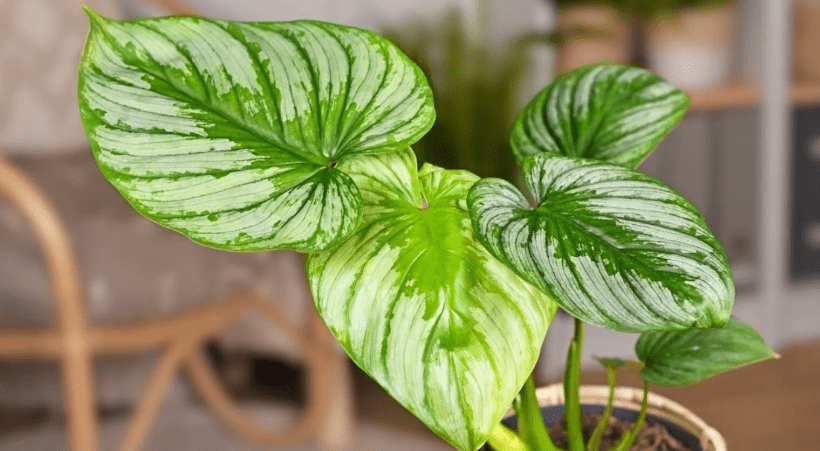
By following the ultimate Philodendron care tips for beginners, you can become a confident and successful Philodendron caregiver and enjoy the beauty of these popular houseplants in your home.
Essential Care Tips for Philodendrons
Light Requirements
Explain the best lighting conditions for philodendrons (indirect light, avoiding direct sunlight).
Philodendrons thrive in indirect light, making them an ideal indoor plant. It’s important to avoid direct sunlight, as this can cause the leaves to burn and damage the plant. Place your Philodendron in a spot where it can receive bright, indirect light, such as near a north or east-facing window. If you notice the leaves starting to yellow or brown, it may be a sign that the plant is receiving too much direct sunlight. It’s also important to rotate the plant regularly to ensure that all parts of the plant receive adequate light and prevent it from becoming lopsided. By providing the right lighting conditions, you can help your Philodendron thrive and maintain its vibrant, lush foliage.
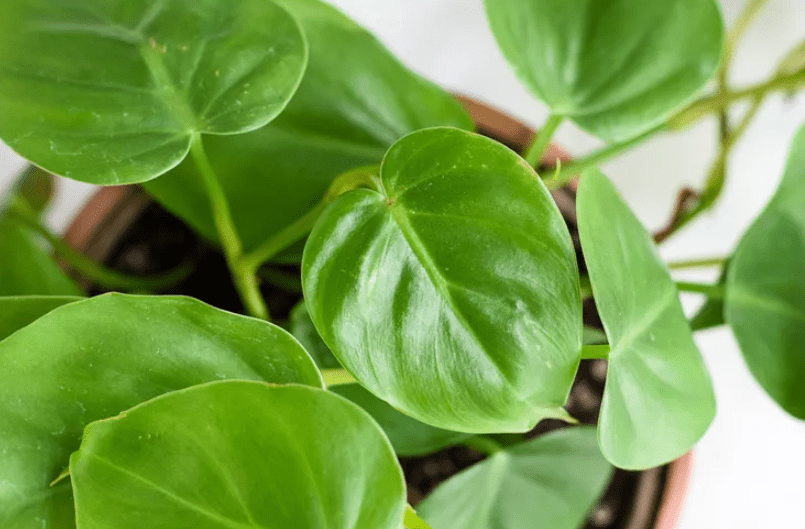
Watering Guidelines
Provide a watering schedule, including how often to water and signs of overwatering or underwatering.
Philodendrons are relatively low-maintenance plants, but it’s important to provide them with the right care to help them thrive. When it comes to watering your philodendron, it’s important to find the right balance. Overwatering can lead to root rot, while underwatering can cause the plant to wilt and suffer. A good rule of thumb is to water your philodendron when the top inch of the soil feels dry to the touch. This may be about once a week, but it can vary depending on factors like the size of the plant and the conditions in your home.
When watering, make sure to thoroughly saturate the soil, allowing the excess water to drain out of the bottom of the pot. This can help prevent water from pooling at the bottom and potentially causing root rot. It’s also important to avoid using water that has passed through a water softener, as the salt content can be harmful to the plant.
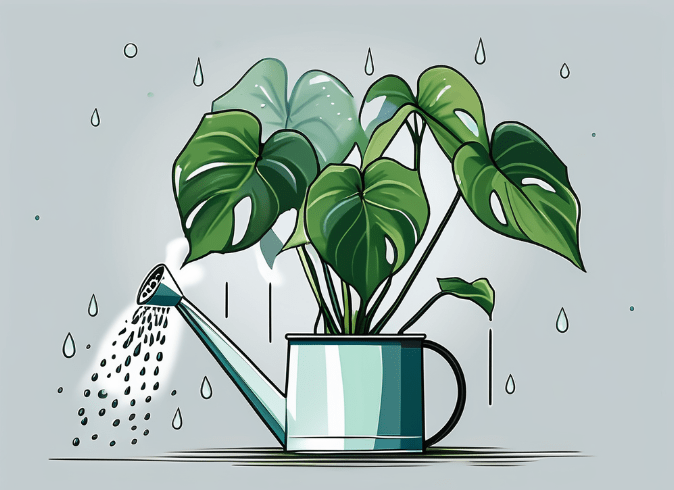
Signs of overwatering can include yellowing or browning leaves, as well as soft, mushy stems. On the other hand, signs of underwatering can include wilting, dry, crispy leaves, and soil that feels hard and dry. By monitoring your plant and adjusting your watering schedule accordingly, you can help your philodendron stay healthy and vibrant.
Soil and Potting Mix
Recommend the best soil types and potting mixes that support healthy growth.
When it comes to choosing the best soil for your plants, it’s important to consider factors such as drainage, aeration, and nutrient content. A good potting mix should be well-draining to prevent waterlogged soil, but also retain enough moisture for the plant to thrive. Look for potting mixes that contain a combination of materials such as peat moss, perlite, vermiculite, and compost. These ingredients provide a balance of moisture retention and aeration for healthy root growth.
For philodendrons specifically, a well-draining mix with good aeration is essential, as they prefer slightly moist but not waterlogged soil. A mix with added organic matter like compost can also provide the nutrients necessary for healthy growth. Additionally, choosing a soil mix specifically formulated for indoor plants can provide the right balance of nutrients and moisture for your philodendron.
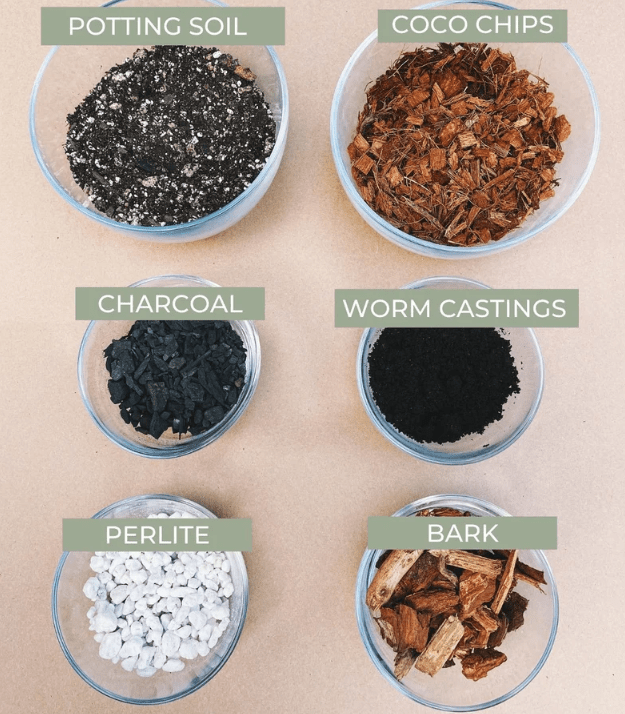
In terms of soil types, a mix of potting soil with added perlite or sand to improve drainage is ideal for philodendrons. Avoid using garden soil, as it can be too dense and compact for indoor potted plants.
Overall, choosing a high-quality potting mix with good drainage and aeration, as well as the right balance of nutrients, will support healthy growth for your philodendron and other indoor plants.
Temperature and Humidity
Describe the ideal temperature and humidity levels for philodendrons.
Philodendrons thrive in temperatures between 65-80°F (18-27°C) and prefer a humidity level of around 60-80%. It’s important to keep the temperature consistent and avoid extreme fluctuations, as philodendrons are sensitive to cold drafts and sudden changes in temperature. In terms of humidity, misting the leaves regularly or using a humidifier can help maintain the ideal moisture levels for your philodendron. Overall, providing a warm, humid environment will support optimal growth and health for your philodendron plant.
Fertilizing Your Philodendron
Offer tips on the type of fertilizer to use and how frequently to fertilize.
When it comes to fertilizing your philodendron, it’s important to choose the right type of fertilizer and to apply it at the appropriate frequency. A balanced, water-soluble fertilizer with a 20-20-20 or 10-10-10 N-P-K ratio is recommended for philodendrons. You can fertilize your philodendron every 4-6 weeks during the growing season (spring and summer) to provide it with the nutrients it needs to thrive. However, it’s important to avoid over-fertilizing, as this can lead to fertilizer burn and other negative effects on the plant. Always follow the instructions on the fertilizer packaging and dilute the fertilizer to half strength to avoid damaging the plant’s roots. Overall, providing the right type of fertilizer and fertilizing at the appropriate frequency will support healthy growth and vibrant foliage for your philodendron plant.
Common Problems and Solutions
Yellowing Leaves
Identify causes like overwatering, lack of nutrients, or too much light.
When it comes to fertilizing your philodendron, it’s important to choose the right type of fertilizer and to apply it at the appropriate frequency. A balanced, water-soluble fertilizer with a 20-20-20 or 10-10-10 N-P-K ratio is recommended for philodendrons. You can fertilize your philodendron every 4-6 weeks during the growing season (spring and summer) to provide it with the nutrients it needs to thrive. However, it’s important to avoid over-fertilizing, as this can lead to fertilizer burn and other negative effects on the plant. Always follow the instructions on the fertilizer packaging and dilute the fertilizer to half strength to avoid damaging the plant’s roots. Overall, providing the right type of fertilizer and fertilizing at the appropriate frequency will support healthy growth and vibrant foliage for your philodendron plant. Additionally, yellowing leaves can be a common issue with philodendrons, and this can be caused by overwatering, lack of nutrients, or too much light. It’s important to address the root cause of the issue and adjust your care routine accordingly to ensure the health and vitality of your plant.
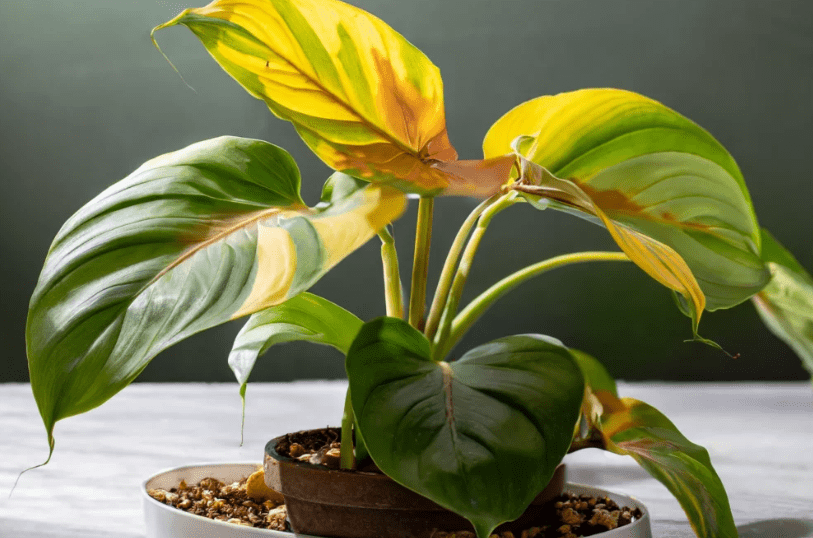
Pests and Diseases
Discuss common pests (like spider mites) and diseases (like root rot).
Philodendrons are vulnerable to common pests such as spider mites, aphids, and mealybugs, as well as diseases like root rot. Spider mites are tiny pests that suck the sap from the leaves, causing them to turn yellow and eventually fall off. Mealybugs and aphids can also damage the foliage by feeding on the plant’s juices. To prevent these pests, regularly inspect your philodendron for any signs of infestation and treat them with an insecticidal soap if necessary.
Root rot, on the other hand, is a common disease that can affect philodendrons if they are overwatered or the soil does not have proper drainage. This can cause the roots to rot and ultimately lead to the death of the plant. To prevent root rot, make sure to water your philodendron only when the top inch of soil is dry and ensure that the pot has drainage holes to allow excess water to escape.
In conclusion, being proactive and attentive to the needs of your philodendron will help prevent common pests and diseases, ensuring the health and vitality of your plant.
Leggy Growth
Explain why leggy growth occurs and how to prevent it by ensuring proper lighting.
Leggy growth in plants like philodendrons occurs when they do not receive enough light. When a plant doesn’t get enough light, it will start to stretch and grow taller in an effort to reach for more light. This results in long, thin stems and sparse foliage. To prevent leggy growth, it is important to ensure that your philodendron is getting enough light. Place the plant in a location where it can receive bright, indirect sunlight for a few hours each day. If you notice that your plant is starting to become leggy, you can also consider trimming back the stems to encourage new, bushy growth. By providing proper lighting and pruning when needed, you can help your philodendron maintain a healthy and compact growth habit.
Tips for Propagating Philodendrons
Propagation Methods
Discuss methods like stem cuttings and air layering.
Philodendrons are beautiful plants that can be easily propagated using methods like stem cuttings and air layering. Stem cuttings involve taking a cutting from a healthy, mature plant and placing it in water or soil to encourage root growth. This is a simple and effective way to propagate philodendrons and produce new plants. Air layering is another method that involves creating a small incision in the stem of the plant and wrapping it with a moist substrate to encourage the growth of roots. This method is great for plants that may be difficult to propagate using stem cuttings. By using these propagation methods, you can easily expand your philodendron collection and share the beauty of these plants with others.
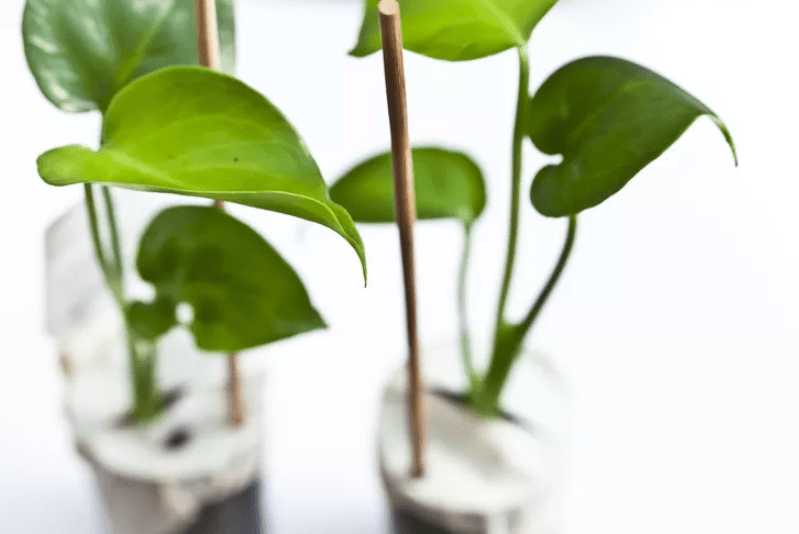
Step-by-Step Propagation Guide
Provide a detailed guide on how to successfully propagate philodendrons.
To successfully propagate philodendrons, you can start by taking stem cuttings from a healthy, mature plant. Make sure the cutting is at least 4-6 inches long and has several leaves. Remove any lower leaves and place the cutting in a container with water or well-draining soil. Keep the soil consistently moist and place the cutting in a warm, bright location to encourage root growth. You can also use a rooting hormone to help stimulate root development.
Another method for propagating philodendrons is air layering. To do this, make a small incision in the stem of the plant and wrap it with a moist substrate, such as sphagnum moss or peat moss. Secure the substrate with plastic wrap and wait for roots to develop. Once roots have formed, you can carefully separate the new plant from the parent plant and pot it in its own container.
It’s important to provide the right conditions for the new plants, including a warm and humid environment. Keep the soil consistently moist but not waterlogged, and provide bright, indirect light for optimal growth.
By following these methods and providing the right care, you can successfully propagate philodendrons and expand your plant collection.
Best Time to Propagate
Recommend the best seasons or conditions for propagation.
The best time to propagate philodendrons is during the spring and summer months when the plant is actively growing. This is the time when the plant is most responsive to propagation methods such as stem cuttings and air layering. The warm temperatures and longer daylight hours provide optimal conditions for the new plant to establish roots and grow. It’s also important to consider the specific needs of the plant, such as providing a warm and humid environment for the new plants to thrive. By propagating during the right seasons and providing the proper care, you can increase your chances of successful propagation and expansion of your plant collection.
Styling and Display Ideas
Choosing the Right Pot
Offer tips on selecting decorative pots that complement the philodendron’s aesthetic.
If you are looking to propagate your philodendron and expand your plant collection, there are a few tips that can help you achieve success. The best time to propagate philodendrons is during the spring and summer months when the plant is actively growing. This is when the plant is most responsive to propagation methods such as stem cuttings and air layering. It’s important to provide a warm and humid environment for the new plants to thrive. When it comes to selecting decorative pots for your philodendrons, it’s important to choose pots that complement the plant’s aesthetic. Consider the size of the plant and its roots when selecting a pot, and choose a pot that allows for proper drainage. Additionally, consider the style and color of the pot to enhance the overall look of your plant display. With the right care and selection of pots, you can successfully propagate philodendrons and create a beautiful plant collection.
Indoor Placement
Suggest ideal spots in the home for displaying philodendrons based on their light needs.
Philodendrons are great indoor plants that thrive in a variety of light conditions. For philodendrons that require low to medium light, such as the heartleaf philodendron, they are ideal for placement in areas with indirect sunlight, such as a north or east-facing window. These philodendrons are great for adding greenery to spaces like living rooms, bedrooms, or offices.
On the other hand, philodendrons that require bright, indirect light, such as the fiddle leaf philodendron, should be placed in areas with ample natural light, such as a south or west-facing window. These plants are perfect for adding a pop of green to spaces like sunrooms, kitchens, or dining rooms.
It’s important to consider the specific light needs of your philodendron when deciding where to display them in your home. By providing the right amount of light, you can ensure that your philodendrons thrive and add beauty to your indoor space.
Creative Styling Ideas
Provide ideas for using philodendrons in home décor, such as hanging baskets or shelf displays.
Philodendrons are versatile and can be used in various ways to add a touch of green to your home décor. You can consider using hanging baskets to showcase your philodendrons, allowing them to cascade down and create a beautiful display. This is a great option for areas with limited space, such as small apartments or offices. Additionally, you can use shelf displays to add a pop of green to any room. Placing philodendrons on shelves at different heights can create a visually appealing and dynamic look. You could also consider placing them in decorative pots or planters to match your existing décor. Another idea is to create a green wall by hanging philodendrons vertically on a wall-mounted planter. This can be a stunning focal point in any room. Whichever way you choose to showcase your philodendrons, they are sure to add a touch of nature and beauty to your home.
Conclusion
In conclusion, taking care of a philodendron plant is relatively easy, as long as you provide it with the right amount of light, water, and nutrients. Remember to keep the soil moist but not waterlogged, and provide the plant with indirect sunlight. Regularly dusting the leaves and occasionally misting the plant will also help keep it healthy. With these care tips, even beginners can successfully care for a philodendron plant and enjoy its beauty in their home.
Frequently asked questions And Answer
It’s best to water your philodendron when the top inch of soil feels dry to the touch. This is usually about once a week, but it can vary depending on the climate and humidity levels in your home.
Philodendrons thrive in bright, indirect light. They can tolerate lower light conditions, but too much direct sunlight can cause their leaves to burn.
Yes, it’s a good idea to fertilize your philodendron every 2-4 weeks during the growing season (spring and summer) with a balanced, water-soluble fertilizer.
When your philodendron’s roots start to outgrow its current pot, it’s time to repot it into a slightly larger container with fresh, well-draining soil. Gently loosen the roots and place the plant in its new pot, then water thoroughly.
Philodendrons prefer temperatures between 65-85°F (18-29°C). They can tolerate slightly cooler temperatures, but they are sensitive to cold drafts.
You can easily propagate your philodendron by taking stem cuttings and placing them in water or moist soil. Once roots develop, you can plant the cuttings in their own pots.
While philodendrons appreciate humidity, misting isn’t necessary. You can provide humidity by placing a tray of water and pebbles near the plant or by using a humidifier.
Philodendrons can be susceptible to pests like spider mites, mealybugs, and aphids. They can also develop fungal diseases if overwatered. Keeping your plant in good growing conditions and inspecting it regularly can help prevent these issues.
